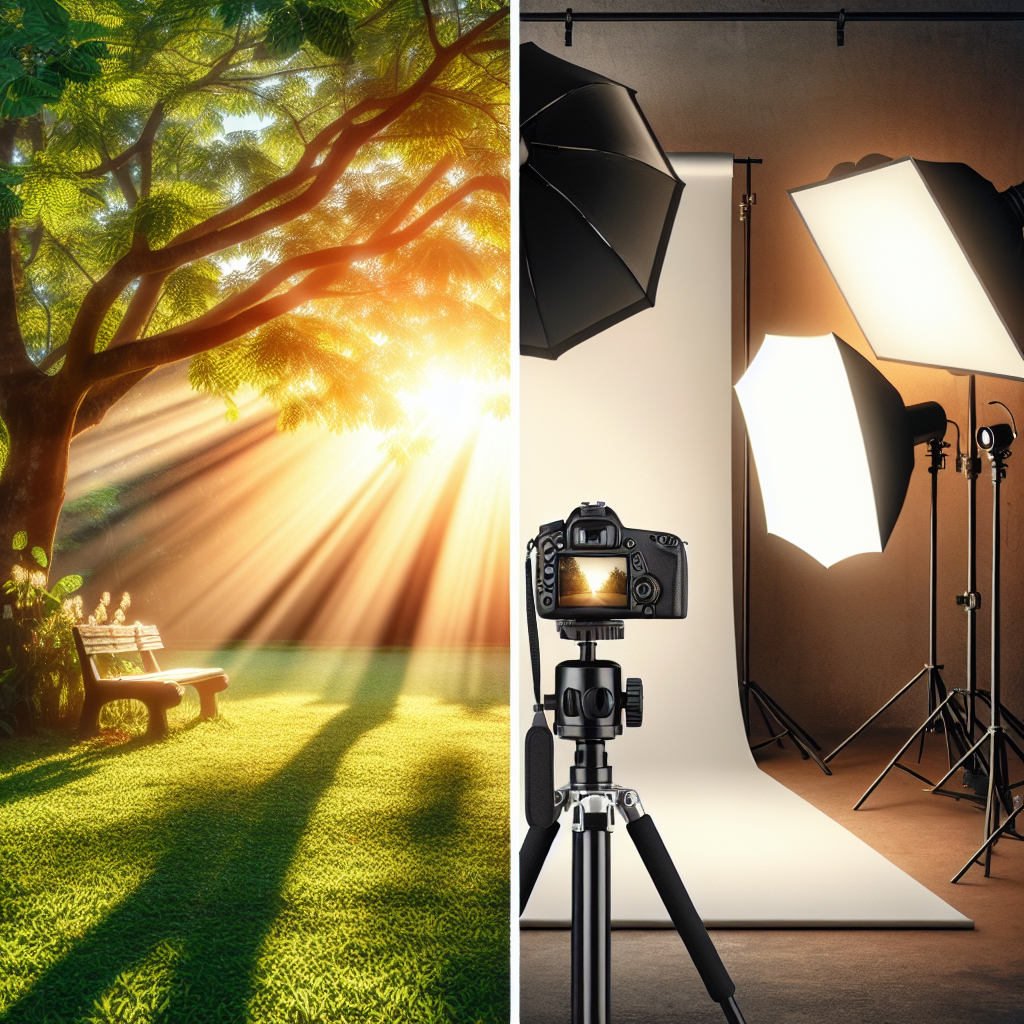Introduction
Lighting is a crucial element in photography that can drastically affect the outcome of your photos. Understanding and mastering both natural and artificial light will enable you to capture stunning images under various conditions. In this article, we will explore the advantages and disadvantages of natural light and artificial light and offer tips on how to use each effectively.
Natural Light
Advantages of Natural Light
1. Cost-Effective: Natural light is free and readily available, saving you money on expensive lighting equipment.
2. Soft and Flattering: The diffused nature of natural light, especially during golden hours, creates a soft and flattering look in photos.
3. Realistic Colors: Natural light generally reproduces colors more accurately, resulting in more authentic and true-to-life images.
Disadvantages of Natural Light
1. Unpredictable: The availability and quality of natural light can change rapidly due to weather conditions, making it less reliable.
2. Limited Control: You have little to no control over the intensity and direction of natural light, which can limit creativity.
Tips for Using Natural Light
- Make use of the golden hours (early morning and late afternoon) for softer, warmer light.
- Shoot on cloudy days to achieve diffused and even lighting.
- Use reflectors to bounce light and fill in shadows.
Artificial Light
Advantages of Artificial Light
1. Full Control: Artificial lighting grants you complete control over the intensity, color, and direction of light, enhancing creativity.
2. Consistency: Unlike natural light, artificial light is consistent and reliable, allowing for longer or controlled shoots.
3. Versatility: With various types of artificial lights available, including strobes, LEDs, and softboxes, you can achieve a wide range of effects.
Disadvantages of Artificial Light
1. Cost: High-quality artificial lighting equipment can be expensive.
2. Complexity: Managing artificial lighting can be complex and may require additional knowledge and experience.
3. Artificial Look: If not used properly, artificial light can create an unnatural, harsh look in photos.
Tips for Using Artificial Light
- Invest in adjustable lights to give you flexibility in different scenarios.
- Use diffusers to soften the light and reduce harsh shadows.
- Experiment with gels to add color and mood to your photos.
Conclusion
Both natural and artificial light have their own sets of advantages and challenges. By understanding how to utilize both effectively, you can improve your photographic skills and capture amazing images, regardless of the lighting conditions. Mastery of lighting is a powerful tool that can elevate your photos from good to extraordinary.

